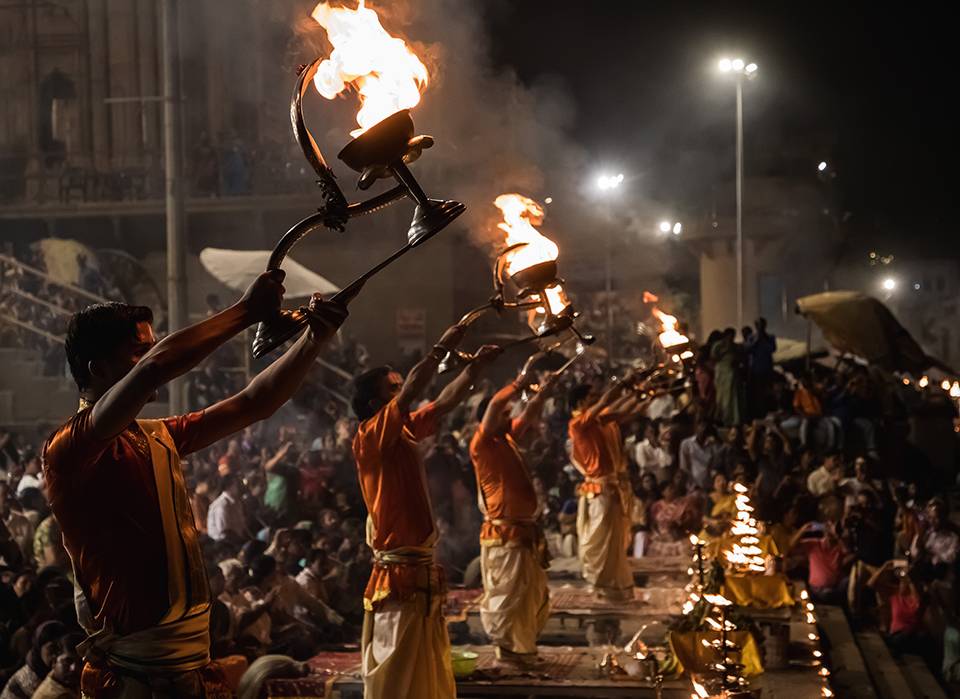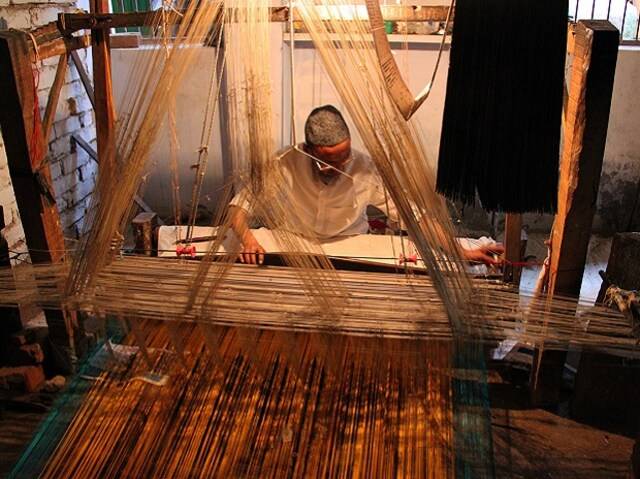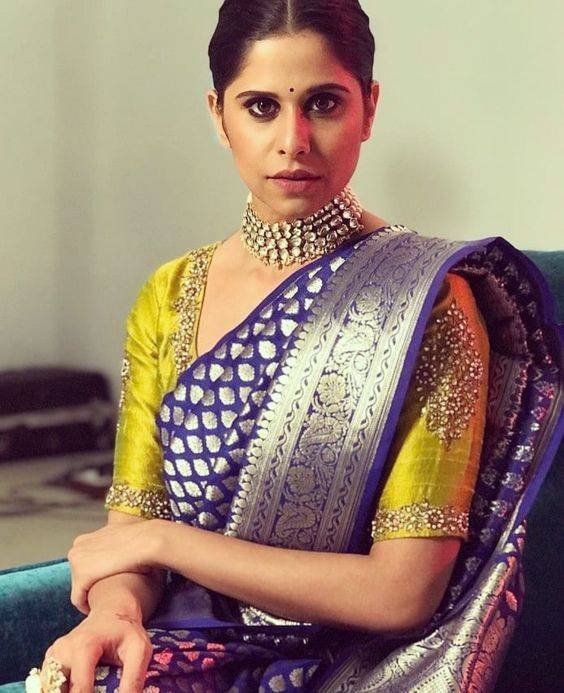One fine morning, Poonam and I decided to take a journey to the food capital (Lucknow) and the oldest, holiest city on earth (Varanasi or Kashi or Banaras).
Since we are from the apparel industry we will focus on the weaving of Banaras.
"Benares is older than history, older than tradition, older even than legend, and looks twice as old as all of them put together." -Mark Twain
Banaras, Varanasi, or Kashi is one of the most important pilgrimage centers of India. Being one of the holiest cities in the country, devotees flock to this divine destination from all over the world. It is situated in the eastern part of Uttar Pradesh on the banks of the holy river Ganga. It is believed that whoever dies here attains moksha- liberation from the cycle of birth and death. The evolution of numerous generations of human life has been witnessed in this holy city.
Varanasi has witnessed the advancement of human society since antiquity. The city can be rightfully called the cultural capital of India. The city can be seen as a confluence of several cultures. Not only Hinduism and Buddhism, but it also has connections with Jainism. The Jains revere this city very much because three of their Tirthankaras were born here.
Since the city was situated on a very important trade route, it flourished as a prominent center of trade and commerce in the 7th century.
It has the distinction of being the oldest constantly inhabited place in the world, yet there is something seemingly timeless about the city of Varanasi.
It has many ghats symbolizing the various facets of life, its countless temples represent an unending sacred poise, its natives a friendly and cheerful bunch, and the river Ganges which gives the city its meaning is the cascade of life and stimulation for generations.

Varanasi has been a symbol of the Hindu renaissance.
Knowledge, philosophy, culture, devotion to Gods, and Indian arts and crafts all flourished here for centuries. Varanasi has always been a famous center of arts and crafts and music and dance. Varanasi is famous for its production of silks and brocades with gold and silver thread work. A renowned carpet-weaving center is at Bhadoi. Wooden toys, bangles made of glass, ivory work, and brassware are also produced in Varanasi. Apart from being the center of the country’s spiritual compass, the city is equally important as a brocade-weaving center.
Banaras is the bedrock of Indian spirituality and the “Banaras weave”. It is a city of master weavers who weave magic with zari and silken threads.
Banarsi silk has, for generations fascinated the fashion world and has been a great source of inspiration to the costume connoisseurs all over the globe.
The most celebrated product of Varanasi’s handlooms is the Banarasi silk saree.
Banarsi silk saree is an essential item in every Indian woman's wardrobe, traditional or contemporary. From an 80 years old grandmother to a 25 years old granddaughter, Banarasi silk may have changed its silhouette, but the spirit remains the same regal and opulent. This spectacular silk is amazingly grand and statuesque and is the perfect representation of the rich textiles’ bequest of India. The changes in this fabric, over the years, represent the history and cultural exchanges of this diverse nation. Banarasi sarees have unparalleled place and magnificence. This is because of the high-quality silk, which is used to create extremely eye-catching, elaborate woven patterns on the sarees.

The flooring of the weaver's weaving room is made up of soil as they dig three to four feet pits for the setting of their handlooms. The size of a pit is according to the handloom size.
Soil gives both a heating effect in the winter and a cooling effect in summers that's why it is also preferred. This inverse nature of soil with the weather condition helps weavers to perform their work of weaving in a more efficient and effective manner. However, the flooring of other rooms except weaving is made up of concrete. Because on the ground floor they also dye yarns which are used as raw material in sarees preparation. The male members of the weaver's family have their dominance in the activities performed on the Ground floor.
For centuries Varanasi was a hub for the silk trade. The gossamer fabric, woven by hand on long wooden looms, is recognizable to aficionados by its refined feel, substantial weight, and audible rustle.
Weaving in India dates to 500 B.C. and flourished during the Mughal period from the early 16th to mid-18th centuries. Since Islam traditionally forbids the images of people and animals, weavers created floral brocades for saris and scarves, much like the gold flower pattern on mine.
Weavers, nearly all men, pass down their skills to their sons or male relatives. But their trade has been shaken over the last few decades as power looms offer a cheaper and faster way to produce the same goods, six to twelve meters of material a day, depending on the design; it can take weaver weeks to create the same amount. This technology left many of the artisans facing starvation and selling the wood from their looms for firewood.
The two most important clusters of North India, Banaras, and Chanderi, not only share geographical closeness but also produce products that have similar features. Similar features might be there, but the vast difference is made by the quality of products.
Weavers of Varanasi are known for their intricate designs and beautiful floral motifs whereas Chanderi fabrics are known for their transparency and sheer texture.
In Varanasi, designs are created in silk whereas in Chanderi the designs are drawn in silk and cotton fabrics. The Chanderi muslin has overtaken the Dacca muslin in the last decade. The Varanasi products are known for their heaviness and deep colors whereas Chanderi products are known for strong construction and fast colors.

Banarasi (referring to Banarasi sarees) will never die, despite all the lows that this industry may face, because Banarasi is about every girl’s dream and this you may find interesting a take; I myself find it somewhat strange, but this aspect of the Banarasi being a dream is what keeps us going.
For craftsmen, Poonam spoke, experimenting with the weaving techniques had always been part of their skillset, however, all experimentations were also triggered by the demand of the marketplace.
Interestingly, this out-of-the-box activity did not earn them the label of designers, although weavers confessed that they had often proactively suggested experimentation in terms of colors, thread counts, and motifs, creating a range of products beyond sarees, like stoles, dupattas, and more.
Those who understood the worth of the traditional weaving methods, like the Dori technique, which resulted in more of a tangible high-end product that would, in posterity, be considered a precious object or heritage, did try their best to not let it go.
RELATED TOPICS:#Apparel,Sanjay Lal
Leave a comment
Our email address will not be published. Required fields are marked *







9 Comments
AartiJun 17, 2022 at 18:45 pm
Extremely well researched and informative article...Enlightening us about our rich cultural heritage...In fact a banarasi saree is like an heirloom passed from one generation to another..Kudos to you Sanjay for coming up with such articles.. God bless..
Maj Gen RanvirJun 13, 2022 at 20:53 pm
Very informative n intresting article.. Sanjay, in fact for our daughter's wedding my wife went to Varanasi to buy Banarasi Silk Sarees...She had to go alone as I could not get leave..
S N SureshJun 12, 2022 at 16:36 pm
Very informative and interesting.
RahulJun 12, 2022 at 16:36 pm
A wonderful informative write up weaving together the history, culture, trade & the everlasting silk weave of Banarasi & Chanderi sarees !
Sagar SinghJun 12, 2022 at 09:52 am
Very well written and good insight.I personally feel more youngsters should read this article and know about our rich old culture and craftsmanship .
Ranjeet singhJun 12, 2022 at 09:15 am
Amazing Sanjay sir! You should write a book on Indian traditional apparel industry. Best wishes! Reg. Ranjeet singh
Pramod KrishnaJun 12, 2022 at 08:16 am
Sanjay!! You have written very well. Since I come from the same area, I’m astonished to read each and every detail. It was giving me a virtual pleasure. Keep it up. Your write ups are valuable for youngsters, & new comers in the garment field. Best of luck.
Kavita RoyJun 12, 2022 at 06:51 am
Very informative and interesting discussion on Banarsi silk.
Anurag PrasharJun 12, 2022 at 03:26 am
Amazing insights and knowledge